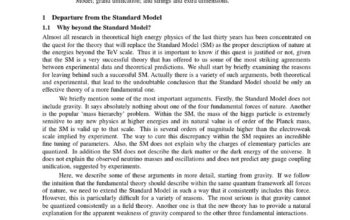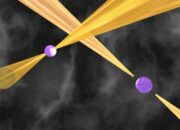In the domain of particle physics, neutrinos represent a compelling enigma—a category of subatomic particles whose elusive nature has led to significant developments in our comprehension of the universe. Generally regarded as background particles, neutrinos find themselves in an unexpected shift, taking center stage in discussions surrounding fundamental physics. This article endeavors to delve into the intricate properties of neutrinos, their means of interaction, and the implications of their newfound prominence in the scientific arena.
Neutrinos, which belong to the lepton family of particles alongside electrons and muons, exhibit negligible mass and carry no electric charge. Produced in abundant quantities during nuclear reactions, such as those taking place within the cores of stars and in terrestrial nuclear reactors, these ghostly particles possess extraordinary penetrating power. Billions of neutrinos traverse through the Earth and pass through the human body every second without imparting any detectable injury. This characteristic, while fascinating, generates challenges for their study and detection, rendering them somewhat of a paradox within the field of high-energy physics.
The early 20th century brought forth the proposal of neutrinos by Wolfgang Pauli in 1930, establishing a theoretical framework to account for missing energy in beta decay processes. However, it was not until 1956 that Clyde Cowan and Frederick Reines succeeded in detecting these particles in a laboratory setting, marking a pivotal moment in particle physics. This detection opened the door to a multitude of investigations and experiments aimed at elucidating the properties and behaviors of neutrinos.
Contrary to the initial perceptions of neutrinos as merely passive constituents of the universe, contemporary research has illuminated their potential roles in various astrophysical phenomena, with far-reaching implications. One of the most intriguing avenues of study lies in neutrino oscillation—an extraordinary phenomenon wherein neutrinos can transform from one flavor to another. This unexpected behavior, discovered in the late 1990s, indicates that neutrinos possess mass, a fact that challenges the long-held beliefs grounded in the Standard Model of Particle Physics. The realization that neutrinos oscillate imbues them with a considerable significance, as it necessitates an extension of our theoretical frameworks to accommodate new physics.
The repercussions of this discovery extend beyond mere theoretical contemplation. Neutrino oscillation has significant cosmological implications, influencing the understanding of the early universe and the subsequent formation of structures. The existence of massive neutrinos may have contributed to the dynamics of cosmic expansion and played a crucial role in the synthesis of elements during the Big Bang nucleosynthesis. Consequently, the scrutiny of neutrinos catalyzes renewed dialogue surrounding the fundamental forces shaping the universe.
Moreover, neutrinos serve as vital messengers from the cosmos, carrying information regarding their origins and the processes from which they emerge. Observatories like Super-Kamiokande in Japan and IceCube in Antarctica are equipped to detect these elusive particles, allowing physicists to glean insight into high-energy astrophysical phenomena such as supernovae and gamma-ray bursts. The study of neutrinos emanating from such cataclysmic events unveils a broader understanding of particle interactions under extreme conditions, thereby informing theoretical models of stellar evolution and galactic dynamics.
As research delves deeper into the realms of neutrino physics, questions surrounding the potential for future discoveries continue to prompt scientific curiosity. One area of investigation includes the connection between neutrinos and dark matter—a mysterious component constituting a substantial fraction of the universe’s mass-energy content. Although neutrinos are not candidates for dark matter, their interactions may illuminate mechanisms that allow for the detection of this elusive substance. This interplay between known particles and dark matter evokes a paradigm shift in cosmological discourse, pushing the boundaries of what is conceivable in modern physics.
A burgeoning field known as neutrino astronomy further exemplifies the promises embedded in neutrino research. By leveraging the unique properties of neutrinos, astrophysicists can observe and analyze events that remain obscured to conventional electromagnetic telescopes. For instance, the detection of neutrinos generated by distant astrophysical sources offers a novel perspective on phenomena such as black hole accretion disks, enabling researchers to gather data from places previously unreachable by traditional methods. This burgeoning discipline accentuates the idea that neutrinos, once relegated to insignificance, are now catalysts for revolutionary findings.
As attention turns toward the intricate dynamics of neutrinos, collaborative efforts and global investments become paramount. Initiatives such as the Deep Underground Neutrino Experiment (DUNE) offer platforms for comprehensive explorations of neutrino properties and interactions. By facilitating experiments in meticulously controlled environments, these endeavors will likely yield significant advancements, addressing critical queries related to the Standard Model and beyond. The implications of understanding neutrino mass, interactions, and potential connections to grand unification theories could pave the way for profound transformations in theoretical physics.
In summary, the transition of neutrinos from peripheral particles to central players in scientific exploration signifies an epoch of transformation within the field of particle physics. Drawing attention to these fundamental constituents reveals myriad implications for our understanding of the universe—spanning from the microcosmic world of subatomic interactions to the grand scale of cosmic evolution. As researchers continue to unravel the mysteries surrounding neutrinos, society stands on the precipice of a renaissance in our comprehension of the underlying forces shaping existence itself. The spotlight on neutrinos heralds a shifting perspective, promising to piquant curiosity in generations of physicists and astrophysicists yet to come.












